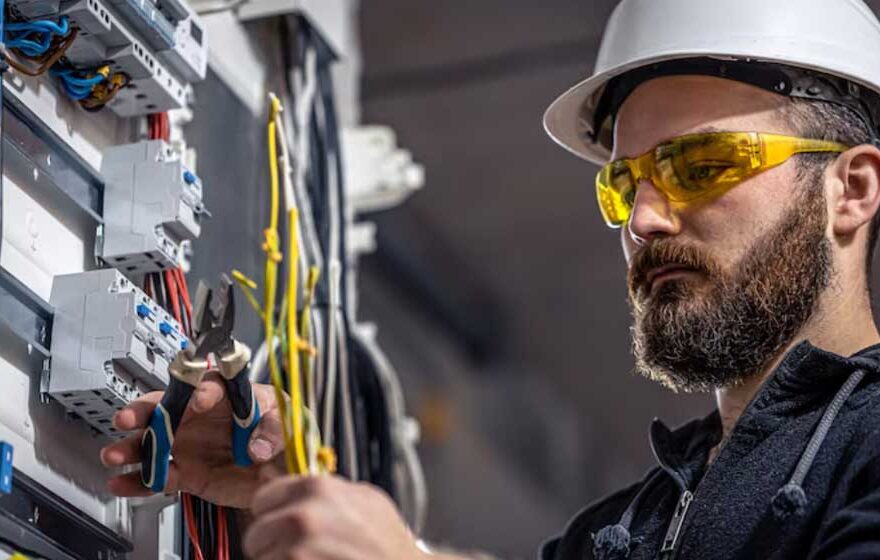How to Keep Your Business Ahead of Downtime and Disruption

Ever had your business grind to a halt because of something completely out of your hands? A sudden power outage, a system failure, or a network glitch at the worst possible time? It doesn’t matter if you run a tech startup, a warehouse, or a local chain—disruption always shows up uninvited, and usually when you’re least prepared.
The truth is, even the most careful businesses can’t avoid every problem. But they can get better at bouncing back—or even dodging some of the hits altogether. In today’s world, where supply chains shift daily and digital threats are growing, having a plan for disruption isn’t just smart. It’s survival.
Think about recent years: weather-related blackouts, remote work growing overnight, rising cybersecurity threats, and a workforce that expects more flexibility and fewer excuses. Businesses aren’t just managing the usual risks anymore. They’re navigating a new normal where resilience is the competitive edge.
In this blog, we will share clear strategies to help your business stay ahead of downtime and disruption—and how building smarter systems and partnerships can keep things running even when the unexpected happens.
Start With What You Can Control
You can’t predict when the power grid will falter or when a storm will knock out your server room. But you can control how prepared you are. One of the simplest ways to gain peace of mind is to protect your infrastructure with backup systems. This means uninterruptible power supplies, secure cloud storage, and good old-fashioned routine maintenance.
But there’s another layer businesses are starting to prioritize: alarm monitoring. This isn’t just about break-ins or burglary anymore. It’s about full-spectrum awareness. Monitoring systems now track fire, water leaks, equipment failures, even network intrusions. That kind of real-time visibility helps you catch issues before they grow into full-blown problems.
Companies like Rapid Response Monitoring Services are leading the way here. With multi-redundant command centers and trained staff working 24/7, their infrastructure is built to respond quickly and reliably. In industries where every second counts—like healthcare, manufacturing, or large-scale retail—this level of alert support makes the difference between a short pause and a serious breakdown.
The goal isn’t to live in fear of failure. It’s to build in safety nets that kick in before the damage is done.
Take a Fresh Look at Communication
When systems fail, it’s not always the hardware that causes the real pain. It’s the silence. One of the biggest reasons disruptions turn into disasters is poor communication. If your staff doesn’t know what’s going on—or worse, your customers don’t—small issues can spiral fast.
That’s why now is a good time to evaluate how your business shares information under pressure. Do you have internal alerts set up? Do employees know who to contact if something breaks? Are there backup plans for your backup plans?
Even account management apps can make communication smoother when you need it most. The more clearly and quickly your team can react, the less chaos you’ll have to clean up later.
And don’t forget the human side of communication. Train teams not just in protocols, but in calm, clear responses. A well-prepared employee can do more to ease tension during a disruption than a dozen unread policy documents.
Build Redundancy Into the Everyday
Resilience is often seen as a response, but it works best when it’s baked into daily operations. Think about redundancy not as waste, but as insurance. If one server goes down, does another one take its place? If one location loses power, can another pick up the slack? If a product shipment is delayed, do you have a second supplier in the wings?
This kind of thinking turns a reactive company into a proactive one. And it doesn’t have to be expensive. Start by identifying your most vulnerable spots—then build workarounds.
For example, businesses that rely on shipping might keep a close eye on weather alerts and route delays and adjust logistics in real time. Teams that depend on customer service uptime might use mirrored systems across different regions to keep calls and data flowing, even if one location has a problem.
It’s not about preparing for doomsday. It’s about designing operations that can flex without breaking.
Invest in the Right Kind of Support
You don’t have to build your resilience alone. Some of the smartest companies are the ones that know when to bring in partners. That might mean hiring a managed IT service, working with security tech experts, or choosing a monitoring provider that goes beyond standard response.
Take Rapid Response as an example again—not just because they’ve got 30 years of experience or hardened command centers, but because their model combines technology with trained people who can think, act, and respond in real time. That human touch is what turns a system ping into a real solution.
When something fails, automation can help. But someone on the other end who understands your setup, your needs, and your industry? That’s the kind of support you want when things get tough.
Future-Proofing Isn’t Just About Tech
It’s easy to fall into the trap of thinking the answer is always more tech. But resilience also comes from mindset. It’s the culture you create around solving problems before they become permanent. It’s how you lead teams through uncertainty. It’s whether your people are trained, trusted, and empowered to take action.
You can have every smart device in the world, but if your team isn’t ready to respond, the tech won’t help much. Invest in training. Set up drills. Talk through “what if” scenarios, even the awkward ones. The more familiar your team is with Plan B, the faster they’ll move when Plan A fails.
Also, keep asking questions. The business world is changing fast—so should your assumptions. What worked last year might not work next quarter. Are your systems still up to speed? Are your vendors still meeting your standards? Staying ahead means staying alert.
Make Stability Part of Your Reputation
Customers may not see the work you do to prevent problems—but they feel it. They notice when systems stay online during storms, when calls don’t drop during peak times, or when services keep working without apology or delay.
In a market full of uncertainty, dependability is a brand advantage. If your business is the one people can count on no matter what, that trust becomes part of your identity. It’s earned quietly, over time. And it sticks.
You don’t need to advertise that you’ve avoided five outages this year. But you will feel the difference when your clients don’t experience them either.
All in all, downtime will always be a risk. But disruption doesn’t have to be a disaster. When you build for resilience—not just response—you protect more than your systems. You protect your reputation, your customer trust, and the energy your team needs to keep going.
Start with what you can see. Strengthen what you can control. Partner with people who take your business seriously.
Because the goal isn’t to avoid every bump in the road. It’s to keep moving forward, no matter what’s in the way.


